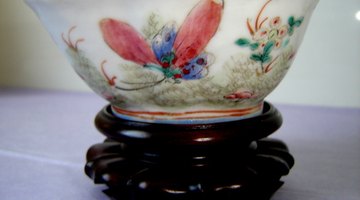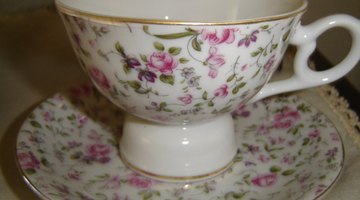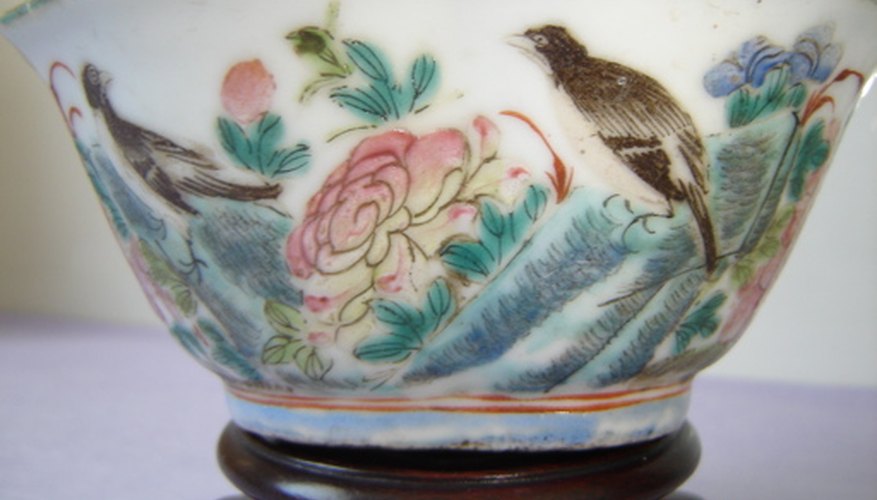From earliest times, the availability of manufacturing materials has dictated the history of crockery, with clay as the basis for most forms of crockery worldwide. Exports of crockery and consumer demand played pivotal roles in prompting new inventions in the use of raw materials, as manufacturers strove to mass produce copies of popular items to minimise the need for imports, and to maximise their profits.
Crockery Cradle

It can be said that China was the cradle of crockery, starting with the invention of pottery during the Neolithic period (around 8,000 B.C.). Early forms of Chinese crockery bowls, tea and wine containers and cups made from ching-pai (bluish-white) porcelain date back to the 10th century. Chinese porcelain tableware reached its zenith in the Qing Dynasty (1644 to 1911), and was the object of much imitation. In 2006, a Qing Dynasty famille rose guyuexuan porcelain bowl bearing the seal of the Emperor Qianlong fetched a record US$19.42 million at a Christie's auction in Hong Kong.
- It can be said that China was the cradle of crockery, starting with the invention of pottery during the Neolithic period (around 8,000 B.C.).
- Chinese porcelain tableware reached its zenith in the Qing Dynasty (1644 to 1911), and was the object of much imitation.
Japanese china
In Japan, crockery production differed from prefecture to prefecture, each with its own special characteristics. During the 12th century, Fukuoka prefecture produced unglazed Bizenyaki crockery for everyday use. Wazimanuri varnished chinaware was known for its durability. Wazimanuri crockery dates back to about the 1400s, when a monk apparently began making cups. In the Saga prefecture, clay was discovered in Arita in 1616, creating an important advantage for the manufacture of Aritayaki chinaware. Among the companies exporting crockery from Arita was the famous East India Company.
- In Japan, crockery production differed from prefecture to prefecture, each with its own special characteristics.
- In the Saga prefecture, clay was discovered in Arita in 1616, creating an important advantage for the manufacture of Aritayaki chinaware.
Hard-paste porcelain

From the 1600s, taking tea, coffee and hot chocolate in porcelain cups and saucers was fashionable in Europe, creating strong demand for porcelain tableware. Initially, Chinese porcelain tableware imports only graced the tables of the rich. Around 1710, a hard -paste porcelain factory was established in Meissen, Germany, the manufacturing centre for Dresden porcelain tableware. Dresden crockery featured ornate, rococo style patterns of fruit and flowers highlighted in gold. In 1771, a hard-paste porcelain factory opened near Limoges, France. In 1842, an American named David Haviland established a porcelain factory in Limoges to produce porcelain tableware for the American market.
- From the 1600s, taking tea, coffee and hot chocolate in porcelain cups and saucers was fashionable in Europe, creating strong demand for porcelain tableware.
- In 1842, an American named David Haviland established a porcelain factory in Limoges to produce porcelain tableware for the American market.
Bone china

The 18th and 19th centuries were the golden age of English crockery, with famous names like Spode, Minton, Wedgwood, Royal Albert and Royal Doulton making premium tableware. An English potter named Josiah Spode II (1755 to 1827) is credited with perfecting the formula for English fine bone china during the late 18th century, paving the way for mass production of bone china tableware. Around 1790, Spode created the highly popular blue willow tableware pattern, inspired by an original Chinese pattern called "Mandarin." An interesting footnote: Spode manufactured dinner services for the ill-fated Titanic.
- The 18th and 19th centuries were the golden age of English crockery, with famous names like Spode, Minton, Wedgwood, Royal Albert and Royal Doulton making premium tableware.
- Around 1790, Spode created the highly popular blue willow tableware pattern, inspired by an original Chinese pattern called "Mandarin."
Melmac
During the 1950s, "Melmac" tableware was popular in the United States. It was made from a compound known as melamine (combining nitrogen, carbon and hydrogen), and was durable and easy to clean. Melmac crockery gradually faded in the 1970s, replaced by plastic tableware and a return to ceramic products.
